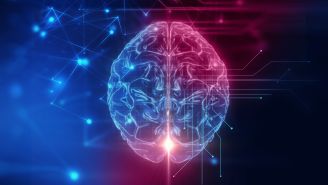Neuromyelitis optica spectrum disorder (NMOSD) is an autoimmune disease that attacks the central nervous system, causing damage to the optic nerve, spinal cord, and brainstem. It can cause a wide range of symptoms depending on the area of the central nervous system that is affected. These symptoms can cause vision problems, pain, paralysis, issues with bowel and bladder control, episodes of uncontrolled vomiting, nausea, hiccups, and many others.
When you are diagnosed with any health condition, it helps to have a good understanding of the basics of that condition. This is not always easy, especially when the condition is uncommon and there are many unanswered questions, as is the case with NMOSD.
With that in mind, here are five key concepts to help understand what is happening in the body when a person has NMOSD.
Inflammation
NMOSD can be described as an “inflammatory disease.” Inflammation occurs when the immune system is active. Under normal circumstances, inflammation occurs in response to an injury or infection—it’s why there is swelling around a bruise and why your sinuses feel congested when you have a cold. It’s your body flooding damaged or infected tissues with inflammatory cells.
With autoimmune diseases, inflammatory cells attack healthy cells and tissues—in the case of NMOSD, tissues in the optic nerve, spinal cord, and brain stem.
Demyelinating disease
Another way to describe NMOSD is a “demyelinating disease.” A demyelinating disease is a condition that damages myelin, an insulating layer of fats and proteins that covers the nerve fibers that make up the central nervous system. Myelin is a good conductor of the electric impulses generated by nerve cells, which allow signals to move along the nervous system. When myelin becomes damaged, nerve signaling works less well.
Autoantibody
Antibodies are proteins that attach to damaged or infected cells, marking those cells to be broken down by the immune system. When a person has an autoimmune disease, the body produces autoantibodies. These function like antibodies but attach to healthy cells.
Blood tests that detect specific autoantibodies can help healthcare providers determine whether a person has NMOSD or another neurological condition like multiple sclerosis (MS):
- Aquaporin-4 (AQP4) autoantibodies. These autoantibodies attach to a protein found in myelin, and they are associated with NMOSD (but not associated with MS). Not everyone who is diagnosed with NMOSD tests positive for these autoantibodies.
- Myelin oligodendrocyte glycoprotein (MOG) autoantibodies. This is another type of autoantibody that is found in some people who have been diagnosed with NMOSD. It is associated with another autoimmune neurological disease called MOG antibody disease, which causes similar symptoms to NMOSD.
A better understanding of these autoantibodies and what’s happening in the immune system when a person has NMOSD has led to the development of new treatments for NMOSD. In recent years, several drug therapies have been approved for people with NMOSD who test positive for AQP4 autoantibodies.
Relapsing-remitting
In most cases, NMOSD follows a relapsing-remitting pattern—there will be a relapse (also called a flare or attack) of symptoms, followed by a period of recovery called a remission. Symptoms can improve during remission, but each relapse will cause permanent damage to the nervous system, and this damage will accumulate over time. Ending relapses quickly when they occur and preventing future relapses are an important focus of treatment.
Chronic condition
NMOSD is described as a “chronic illness,” a condition that lasts a long time. A more accurate way of describing NMOSD would be a lifelong condition. Once a person has NMOSD, they will have it for the rest of their life. Even when the disease is in a period of remission, NMOSD never completely goes away.
Thinking of a disease in these terms can be emotionally and mentally difficult, but it can also be helpful when managing NMOSD. Even if symptoms are in remission and have been in remission for a while, it’s essential to keep up with healthcare appointments and take medications as directed. It’s also important to follow the other strategies for overall good health that are important for everyone—like preventing infections, lowering stress, eating well, and staying active.






